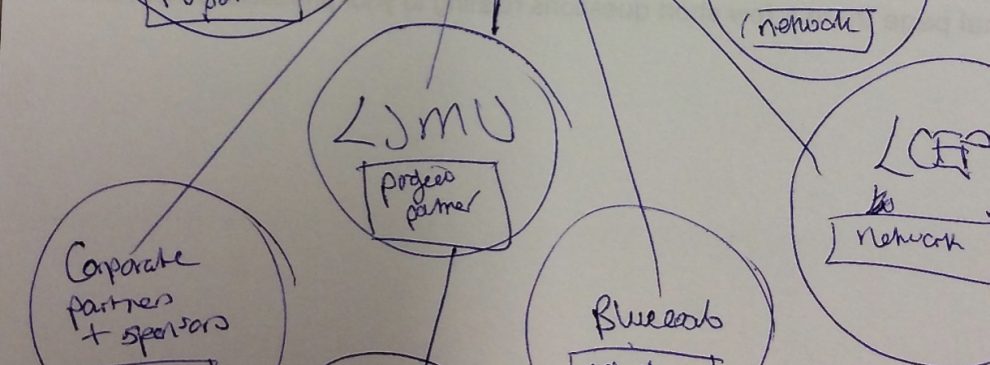Cultural Governance and Impacts 18: finding stepping stones across sectors, stakeholders and narratives
Added on Thursday, March 21st, 2019
 |
Tamara West is a research associate at the ICC. In this first of two blogs on her Impacts 18 work, Tamara reflects on the methods and outcomes of her Cultural Governance research. |
…
My work on the Cultural Governance theme of the Impacts 18 research set out to investigate how cultural strategies, policies and networks within Liverpool and the City Region were perceived, who the key stakeholders where, and what had – or had not – changed in the decade since the hosting of the European Capital of Culture (ECoC). Whereas the other Impacts 18 research themes were able to repeat surveys and methodologies utilised in the Impacts 08 research programme, the Cultural Governance strand had to build a new methodology. The 08 research had focused on sponsorship, regeneration and leadership, with only some of the full research published. For Impacts 18, the idea was to explore how culture had developed in the city in terms of cultural strategies, but also in terms of its role across unrelated policies and across different sectors. Cultural governance was understood as occurring across, and enacted by, different stakeholders – a network, rather than a top-down structure, made up of different organisations and sectors across the city, regional and national scale. So, in our exploration of it, we set out to utilise a multi-stakeholder perspective.
A mapping methodology was developed, and is discussed in detail in the Cultural Governance theme report. As part of this approach, eight mapping workshops were held with 44 stakeholders from the policy, cultural, economic and community sectors. There were some challenges here. Several stakeholders were invited but did not attend. Some workshops had well balanced cross-sectoral discussions; others were dominated by stronger voices or organisational views. There were differences in experience too. Several participants had been key people or worked for key organisations during the ECoC year and beyond; others had a more contemporary-focused perspective and knowledge. We talked to people from across the city, city region and beyond, from local arts organisations to large cultural organisations, and from entrepreneurs through to city and regional leaders. The resultant findings were in some aspects sector-specific, but several themes and concerns were shared across sectors, with funding cuts, issues of representation, and the need for a more cohesive approach (in terms of policy, strategy-making and implementation) all clearly articulated. What might be classed as ‘official voices’ highlighted the confidence in the city since the ECoC and the associated development of a strong, shared city narrative; whilst several community, economic and cultural stakeholders were more ready to question a lack of inclusivity in the approaches to cultural strategies and understandings of culture, and a need for the development of a more diverse narrative of the culture and heritage of the city.
The great – albeit challenging – thing about qualitative research is that it asks for, and if successful receives, participants’ knowledge, experience and perspectives. In short, it provides a multi-faceted, in-depth exploration of the how and why of processes and actions. These are a window, a contemporary portrait of the state of things – of what has progressed and what still needs to be done. Notions of ‘culture’ and of ‘impact’ were claimed, reflected on, denied and criticised within the workshops, interviews and, when contextualised and expanded by the wider Impacts 18 thematic strands, help to illuminate what is present and what is absent in the Cultural Governance landscape – and how we might find stepping stones between the two.








